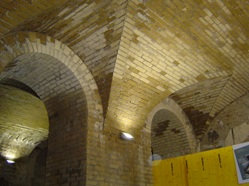S.A.R.A. Project
The S.A.R.A. project (Sustainable Architecture Applied to Replicable Public Access Building) officially started in June 2004 and will be concluded in May 2008. Financed by the European Committee in the context of the 60th Program for Research and Development, it aims to preserve energy, an important task considering the relentless increase of the price of petroleum.
Public buildings generally use up a grear deal of it and their impact on the energy needs of a country is not to be overlooked. If public buildings could produce part of the energy needed, if they could be heated, cooled and ventilated naturally (by using large windows used for heating purposes, correct exposure to sunlight and so on), if they could gather and re-use rain-water, then their owners would be able to make a more efficient use of the basic natural goods that are available to anyone, thus the energy issue, even if not solved, would undoubtedly improve.
S.A.R.A. aims to:
The Royal Home for the Poor participates in the S.A.R.A. project with the edifice containing the main lobby, in which it has been decided to install photovoltaic panels on the roof and tanks to gather rain-water. These measures are already included in the executive project of the next edifice to be restyled and will be applied to the rest of the building later on.
Altogether, this project choice, together with the use of sustainable materials and the planting of an abundant vegetation in the internal courtyards as well as in the external green areas, clearly shows how much attention is being drawn on the most pressing issues relating to energy consumption and environmental conservation. The principle according to which structures that are important from an historical, cultural, architectural and social viewpoint wil also be decide;, therefore preserved according to the law by the Ministry of Cultural Items and Activities, can be equipped with technological plants aiming to be sustainable without compromising the monumental value of the building.
Together with the Royal Home for the Poor, another six different public buildings take part in S.A.R.A.: in Sinabel-kirchen (Austria), there will be a headquarters, with exhibitions halls and restaurants; in Ljubljana (Slovenia), there will be a commercial centre; in Bukhara (Uzbekistan), the Medersa Rachid will be restyled and turned into a fitness centre; in Barcelona ( Spain), they are working to build a first-aid station, while in La Tour de Salvagny (France), a primary school is being restored; at last, in the United Kingdom the students services centre of the University of Southampton is already working.
These institutes are set as examples for public administrators, private bodies or others who want to build, restore or restyle their own public buildings according to the principles of sustainability. Information gathered and processed by European researchers taking part in S.A.R.A. will be useful for technicians, administrators, planners involved in the carrying out of any future eco-buildings and will contribute to enlightening final users on a more sustainable use of energy in public buildings.

 download SARA newsletter n. 5
download SARA newsletter n. 5